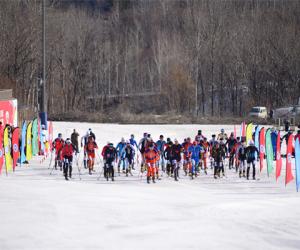The Tea-Horse Road of Southwest China used to be called the Southern Silk Road. Its route crosses some very high and dangerous terrain. It begins from Sichuan and Yunnan provinces in Southwest China, runs along the eastern foothills of the Hengduan Mountains, a center of tea production in China, then crosses the Hengduan mountain range and deep canyons of several major rivers, the Yalong, the Jinsha (the upper reaches of Yangtze), the Lancang (Mekong), and the Nu (Salween), thus spanning the two highest plateaus of China (Qinghai-Tibet and Yunnan-Guizhou) before finally reaching India south of the Himalayas.
The name of the road (Chamagudao in the Chinese records meaning the tea and horse road) indicates its importance in the trade of tea and horses, but other products passed along it as well. Horse caravans carried tea, sugar and salt from Sichuan and Yunnan to Tibet and brought back colorful local mountain goods. The Han people over the ages often bought warhorses from Tibetan and other ethnic groups of Southwest China, and these too came over this road.
The road also served as a significant corridor for migration as well as a channel for cultural communication among the ethnic groups in western China; beyond this, it was a bridge for international cultural and economic exchange between China and India. Although silk was not included in the trade goods carried over it, at times it has been termed the Southern Silk Road of China, due to its importance in both economic and cultural aspects of Chinese history.
The Hengduan mountain range and the Qinghai-Tibet plateaus through which the Tea-Horse Road passes is an area with an abundant bio-diversity and complex topography. Generally speaking, the Tea-Horse Road follows two main routes.
One of them starts at the original place of the famous Pu-erh tea production (present day Xishuangbanna and Sima prefectures of Yunnan province) and passes through Dali, Lijiang, Zhongdian (present Shangrila county), Deqin of Yunnan Province and Mangkang, Zuogong (Zogong), Bangda, Changdu, Luolongzong, Gongbujiangda and Lhasa in Tibet. From Lhasa it heads south through Jiangze (Gyantse), Pali, and Yadong in Tibet and on to Burma, Nepal and India.
The other route starts at Ya'an, Sichuan province, which is the major site of Yacha tea production, and goes through Luding, Kangding, Batang, Changdu and Lhasa, and then to Nepal and India. According to the surveys, the tea and horse route from Sichuan to Lhasa is some 2,350 kilometers long, with fifty-six traveling stages. One has fifty-one river crossings, fifteen rope bridges and ten iron bridges and traverses seventy-eight mountains over 3,000 meters high. All of this makes the route one of the most difficult in the world.
Moreover, the weather in this area is extremely changeable. In a single day the traveler may experience heavy snow, hail, burning sun and heavy winds, with extreme variations in the temperatures. There are many branches joining these two major routes, combining to connect the economy, religions and cultures in the broad triangular area of Tibet, Yunnan and Sichuan.






